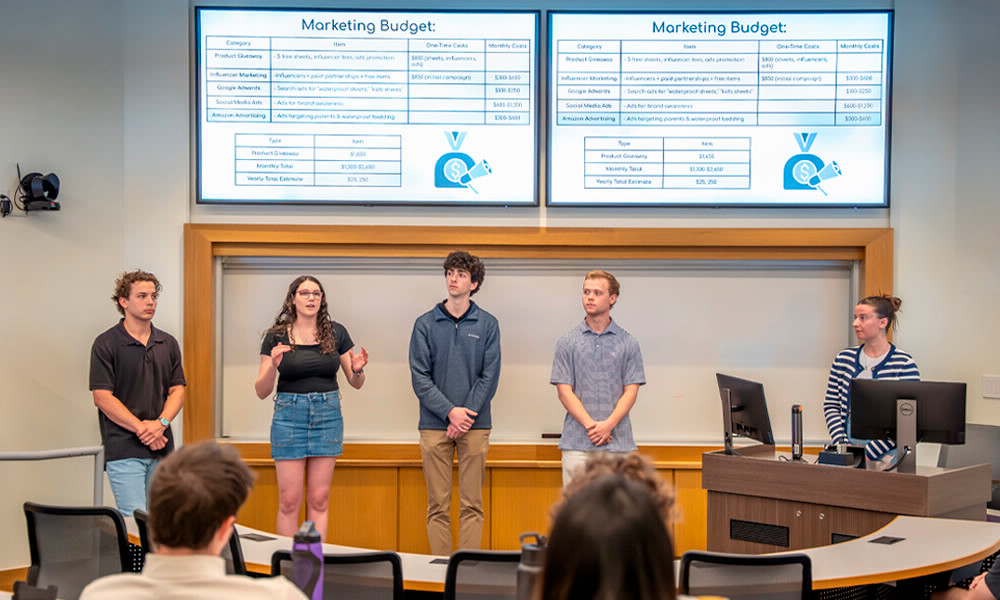Tariff consequences reach the classroom
News
SUMMARY: Students in MKTG 462 International Logistics get a real taste of disruption and volatility.
“Resilience is a big part of supply-chain education,” said Mert Tokman. “I explained to them that this tariff issue is just another one of these disruptions that we have to handle right now and then figure out how to be prepared for it in the future.”
Tokman, professor of Marketing, International Business and the Global Supply Chain Management minor, teaches MKTG 462 International Logistics each year. Focused on developing students' knowledge of import/export procedures and the tools used in actual situations, the course prepares them for dynamic decision-making and problem solving. The hallmark of the course is a semester-long project that tasks teams of students with identifying a product and working through the real-life logistics of purchasing and selling it on their own Amazon storefront.
“The project is the experiential learning part of the whole class,” said Tokman. “We start with sourcing and purchasing materials, then we talk about warehousing and transportation of the products and managing the inventory.” The student teams worked in real time. After identifying the product they wished to sell, initial contact with the suppliers was made through Alibaba, a Chinese e-commerce site. Students gained first-hand experience communicating with people overseas while handling language and time-zone barriers.
About three-quarters of the way through their semester and project timeline, President Trump announced his action plan for imposing tariffs on all U.S. trading partners—including the placement of exceptionally high rates on Chinese goods.
Business Management major, Ryan Varricchio, is minoring in Global Supply Chain Management and said the timing of this news was the “ultimate surprise.” He said, “I think having this come up at such an interesting time, especially as we're doing the second half of the project and renegotiating our terms, is truly a learning experience all around.”
While the teams’ projects weren’t completely derailed, factors such as shipping and import costs were immediately affected, forcing students to adjust their budgets and margins and increase the number of units they needed to sell in order to break even or make a profit. “I talk a lot about disruption and resilience in the supply-chain industry. We get hit with disruptions all the time, whether it's natural disasters, pandemics or wars,” said Tokman.
Varricchio explained that his team's main concern now is shipping prices. They’ve continued to go back and forth with their suppliers, which has added another level of stress, considering the delay in response times and the delicate nature of the seller/supplier relationship. Still, navigating those challenges has made the experience feel all the more realistic. He said, “The class and project has been really immersive, so it's been cool to watch it all unfold, and it reflects what actually happens out there in the global supply chain.”
Experiences like this give students a real advantage as they prepare to enter the workforce. Beyond technical knowledge, they develop the ability to think on their feet, adapt to changing circumstances and make informed decisions under pressure. These are the kinds of skills employers increasingly value in a fast-moving global economy.
This semester-long project has done more than teach students the mechanics of global logistics—it has mirrored the volatility and complexity of real-world supply chains. From navigating international communications to responding to unforeseen disruptions like tariffs, students experienced the kinds of challenges supply-chain professionals face every day. The course not only deepened their understanding of global commerce but also instilled critical skills in adaptability, problem solving and strategic thinking, preparing them to face with confidence the demands of the modern supply-chain industry.
